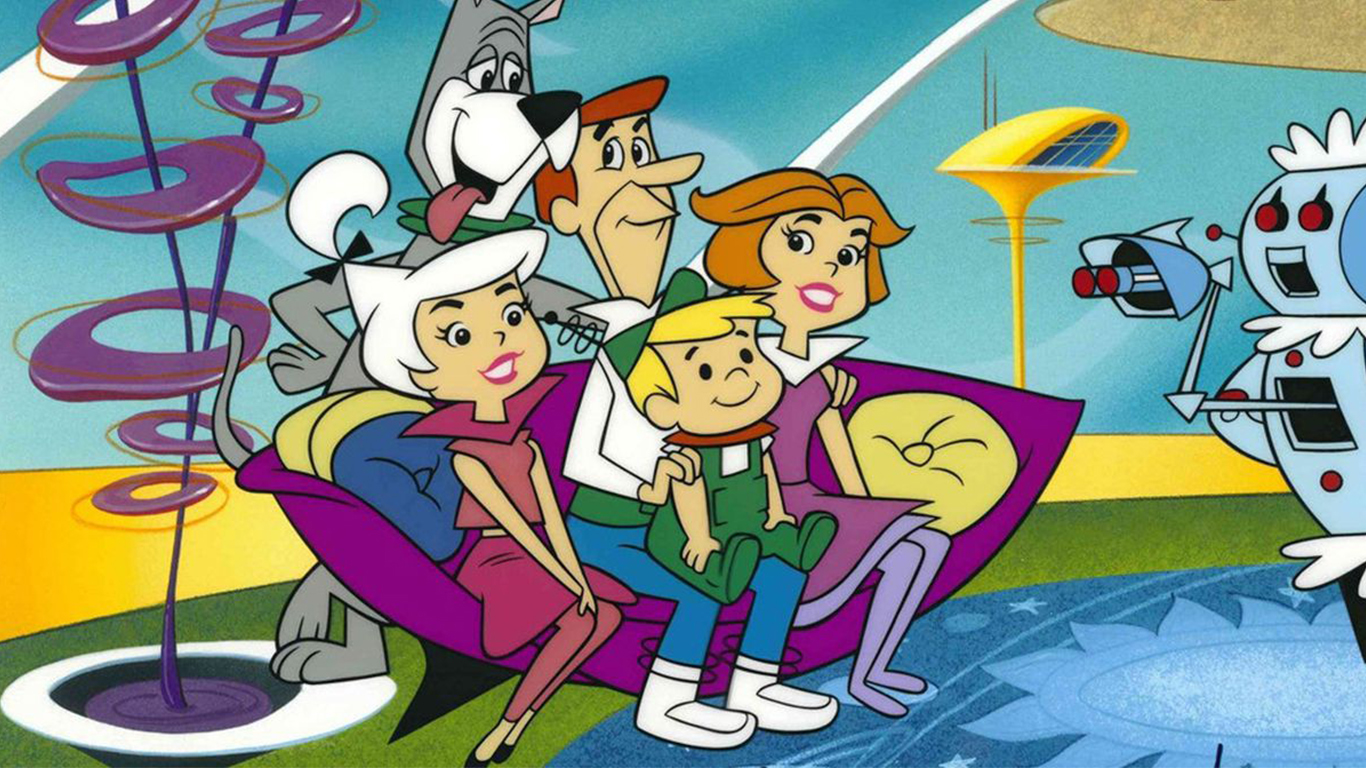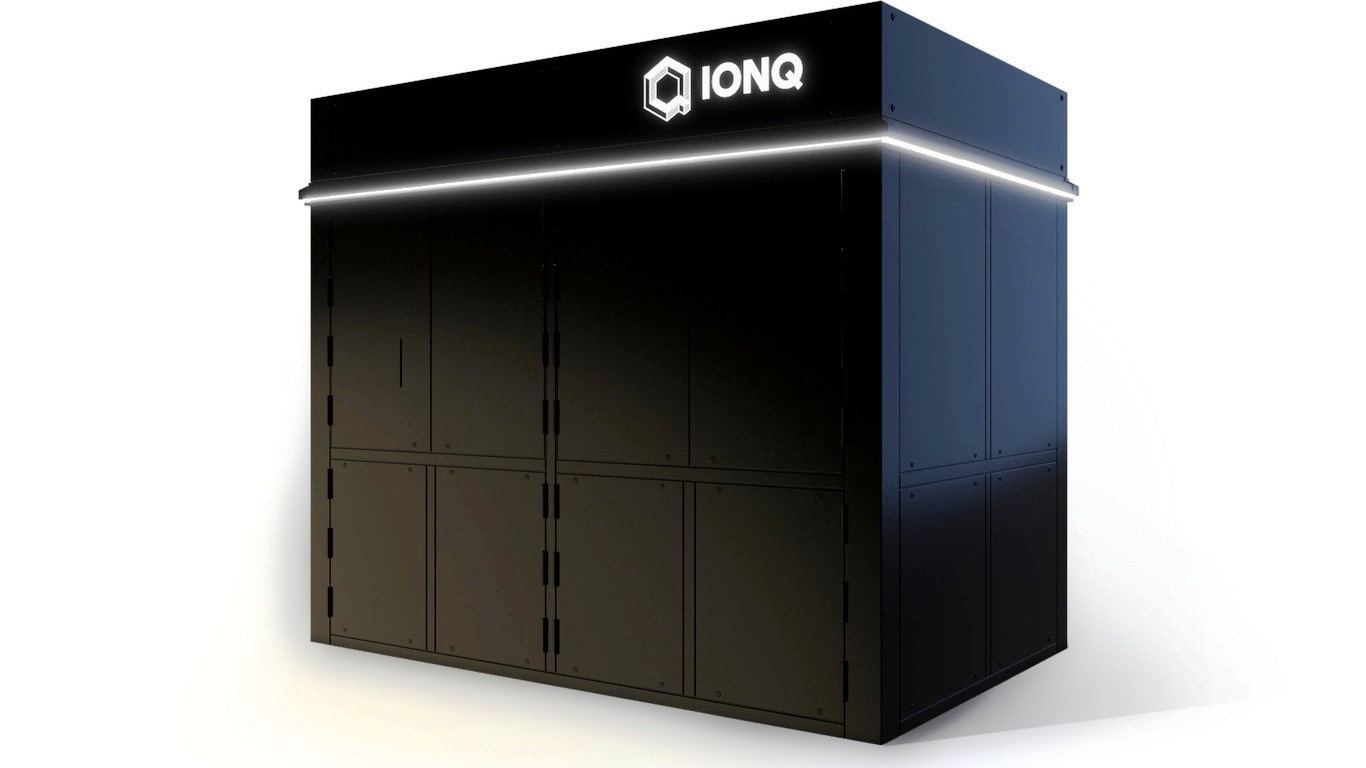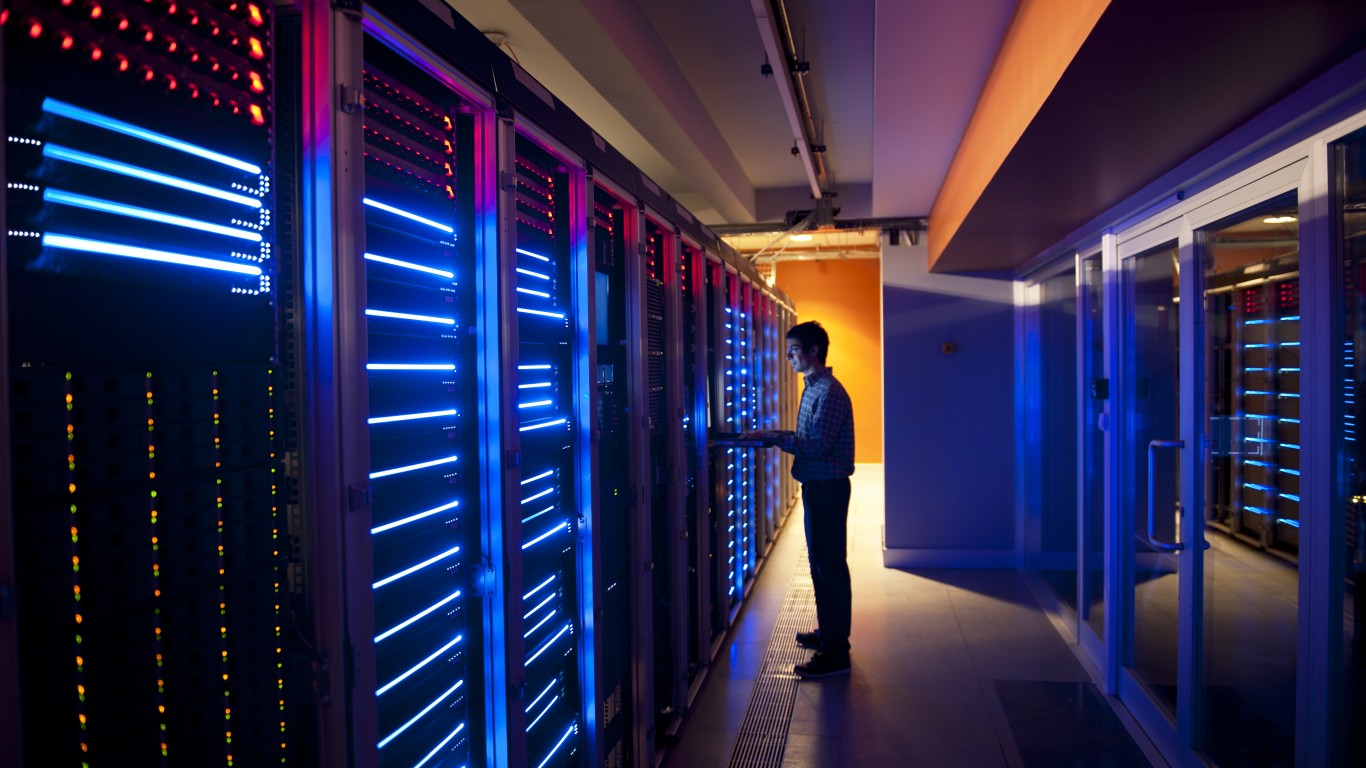
One of the most common questions I get from investors about Artificial Intelligence (AI) this year is… “If it’s all just about ChatGPT, what stocks can I buy besides NVIDIA?”
It’s a valid concern. Just because we hear that a $20 trillion economic tsunami of exponential innovation is exploding over the next five years, doesn’t mean that we can readily see how that huge blast filters out of the technology sector and into hundreds of other industries. Or that this might easily create wealth for savvy investors.
ChatGPT… It’s Just a Fun Toy, Right?
ChatGPT may be the “chatterbot” that ate the internet, but most still underestimate the AI impact on nearly every industry.
I was predicting in 2022 — when I scooped NVDA shares under $125 — that something would eventually come along to make people see how powerful the AI revolution was. And when it showed up, I wrote a special report about ChatGPT to explain why another “iPhone moment” was upon us.
Since then, I think it’s all unfolding right now in massive surprising demand for the tools of AI that are called “massively parallel architectures.” And there’s still time to get on that wave for a ride that will last several years.
So it’s a good idea to review the major forces driving the AI tsunami that allowed NVIDIA CEO Jensen Huang to predict a $250 billion per year transformation… as global enterprises shift to accelerated hyperscale computing that only comes from GPU (graphics processing unit) systems.
The Data Deluge Has Grown Exponentially
It has been estimated by data-focused companies like Splunk that over 50% of corporate data is “in the dark.” It’s not seen, used, or capitalized on.
That’s because every Global 2000 company is collecting terabytes of log files every day that most never knew how to use even a year ago.
But what used to be a black hole of infinite gravity and compression has now become a gold mine of possibility.
When NVIDIA announced in May that it would not only beat its prior Q2 revenue guidance by $4 billion but that it was launching its latest GPU system, the DGX GH200 — that was 50% faster than the prior generation — the stock launched above $350 and never looked down again.
I told investors throughout June and July that NVIDIA would beat even their most optimistic forecasts for sales and easily top the $12 billion guidance for this current quarter that began in August. They guided to $16 billion.
Why did this happen?
I think the biggest preview of this catalyst was that the company was also able to share in May that its first three customers already in line were Alphabet, Microsoft, and Meta. This was the spark that made hundreds of other global enterprises realize they need to upgrade their datacenter infrastructure — or else.
7 Secrets of the AI Revolution
So what exactly is it that major enterprises across every sector, from manufacturing and energy to healthcare and retail, want to accomplish with all their data?
There are many areas where machine learning and deep learning, the two primary galaxies of AI, can be applied to the dark data deluge. But here are 7 major categories that I think capture the goals of the modern enterprise.
1) Model
Once data is no longer dark but accessible and able to be “mined,” it can be used in millions of ways to model how a company thrives (or not) within its industry.
This is the early stage of awareness and idea generation. We have moved beyond “data processing” to data analytics that reveals new insights. What does our data tell us over any given period?
2) Forecast
Just like weather modeling has become a fantastically efficient and adaptive set of systems, any enterprise can take models and apply them to their business and industry for new predictions and insights.
When an organization can experiment with data and forecasts, it opens up a part of the human brain that thinks in multiple scenarios and outcomes. Because AI is just a powertool and it still requires people who know how to strategically apply its deep analysis. Corporations are starting to think of AI as a “second brain” for decision making. And this is essential to thriving in a hyper-speed economy.
3) Visualize
Not every manager wants to stare at spreadsheets all day to understand what’s going on in their business. And especially when they need to communicate with a wide diversity of stakeholders — from investors to entry-level employees — they know that a picture can be worth 10,000 words.
That’s where visualizations of data can make the difference between a lost message and a grand slam presentation about company initiatives. The latest AI tools in the hands of the most innovative SaaS (software-as-a-service) companies make this kind of “data-come-to-life” possible in millions of enlightening and persuasive ways.
4) Simulate
Engineering teams from the auto and aircraft plants to the medical device maker can create system and product designs and fully test them in simulated virtual environments with billions of trials and random errors. This ensures high degrees of both efficacy and safety before they send anything to the factory or biotech manufacturing floor.
This is how BMW used NVIDIA platforms to create “digital twin” factories to test their robotic systems before they built them. And it’s how NASA engineers design missions and spacecraft before they forge a single part, whether from a special alloy or 3-D printed composite. It’s also how every major company can use metaverse tools to simulate their products, processes, and customer experience.
5) Automate
Once a machine learning algorithm has been designed to process data and perform specific functions in real-time, a host of efficiency is bestowed on that company. Some fear that this automation ends up eliminating jobs, but actually it frees up employees to do more creative humans-only kind of work that advances company goals.
When a company or municipality can use predictive analytics to give them early intel about when a machine, system, traffic, supply, demand, infrastructure, or pricing element might shift or break down, they have real-time analytics to investigate and respond proactively.
6) Innovate
When data is harnessed in the above 5 ways, it unleashes the creativity of that organization. So much R&D can be made more efficient — and 1,000 times faster — to give employees the knowledge, insights and tools to imagine even bigger goals. This speed of intel gives them the time, talent, and optimism to create the future.
7) Solve
My last secret is primarily about the world of science where thousands of curious, experimenting minds are looking to expand genomics research, create new materials and energy for earth and space, study climate change at advanced levels, and diagnose and treat cancer and other genetic or neurological diseases at the earliest stages.
I don’t know if Jensen Huang would admit that his favorite “secret” here is the solving of vast scientific problems. But I know from following his every word for the past 7 years that this one ranks pretty high for him. He’s like a boy building toys for every exploration.
The Age of Exponential Innovation
Moore’s Law was a real force in computing for the past 5 decades, as semiconductor technology grew ever faster, better, cheaper — and smaller. But the rate of progress started to slow in the 2010s.
That’s when Jensen Huang predicted over a decade ago that accelerated GPU computing — driven by advanced software algorithms — would change the world by reigniting Moore’s Law into another exponential phase. We have just entered that arena.
Path to World-Changing Profits
Today I invite you to download my Special Report on an especially brilliant sector of Artificial Intelligence: ChatGPT: 5 Stocks for the Predicted $15.7T AI Boom.
As one of our 5 selected companies puts it, AI-powered ChatGPT “frees people from the mundane so they can accomplish the miraculous.”
Since its launch in November 2022, it has been answering follow-up questions … admitting mistakes … challenging incorrect premises … and even rejecting inappropriate requests.
No wonder this phenomenon had 1 billion cumulative users within 3 months after launch, with an adoption rate 3X greater than TikTok and 10X greater than Instagram.
Bank of America estimates that by 2030, AI’s overall economic impact could skyrocket to well over $15 trillion dollars.
That puts ChatGPT in the big leagues with major players like the internet and iPhone.
Here’s more good news. One of my Top 5 ChatGPT recommendations is a little-known “Sleeper Stock” that is still under Wall Street’s radar.
With ticker prices still at bargain levels and the overall economy holding strong, it’s almost impossible to resist.
So, I suggest you click now for my Special Report and see those 5 stocks.
PLUS you’ll be entitled to 30-day, real-time access to all of Zacks private buys and sells.
Your cost? Only $1. So no reason to hesitate. And no obligation to spend a cent more.
I should mention that we are limiting the number of investors who share our Top 5 ChatGPT stocks, so there will be no extensions to this opportunity. It ends September 10 – midnight Sunday.
All the Best,
Kevin Cook
Kevin Cook, Senior Stock Strategist at Zacks, is a leading expert in technical analysis, emerging trends, and what makes markets move. He invites you to check the timely, high-potency stocks in his ChatGPT report.
To read this article on Zacks.com click here.
This article originally appeared on Zacks
Thank you for reading! Have some feedback for us?
Contact the 24/7 Wall St. editorial team.





